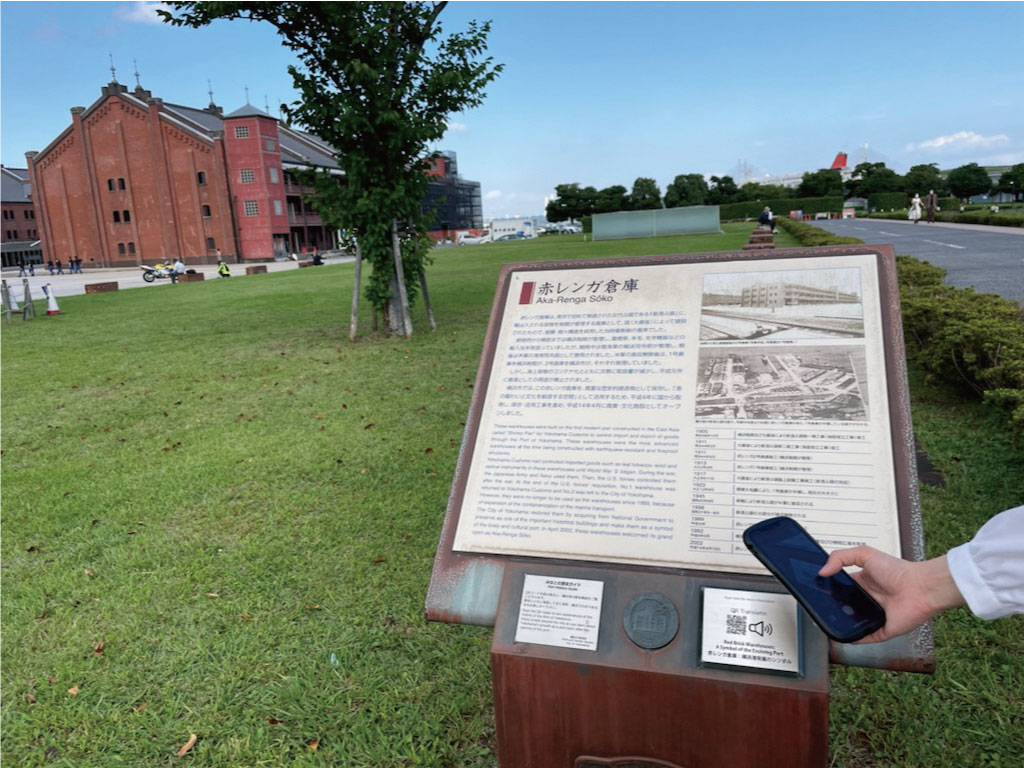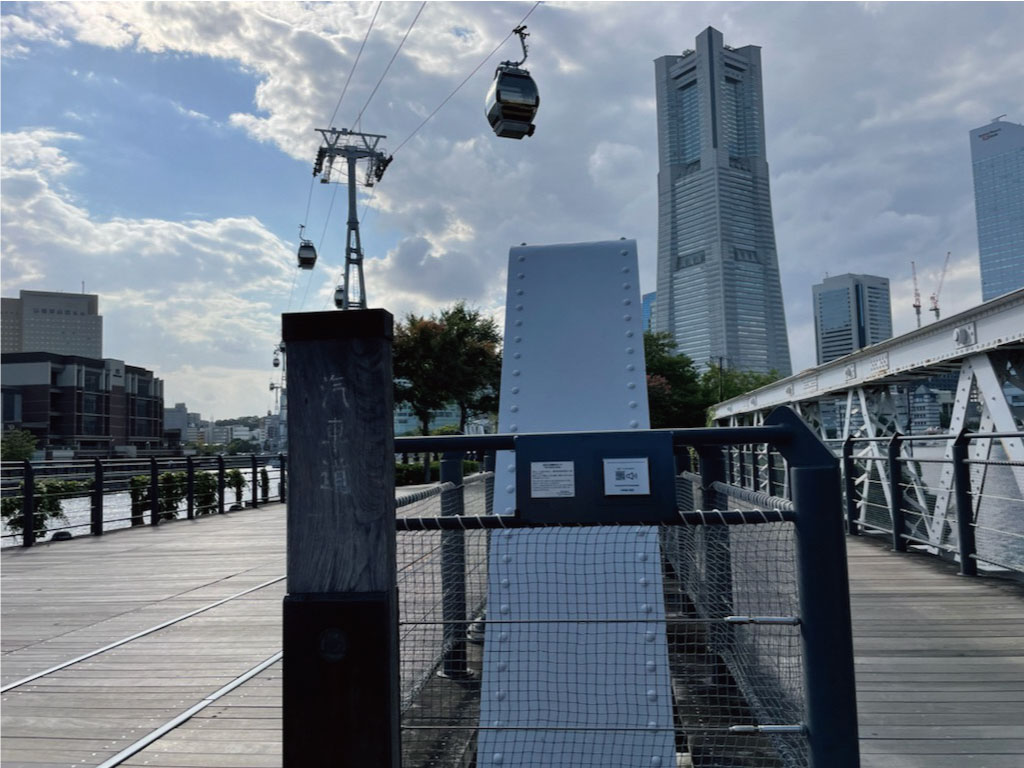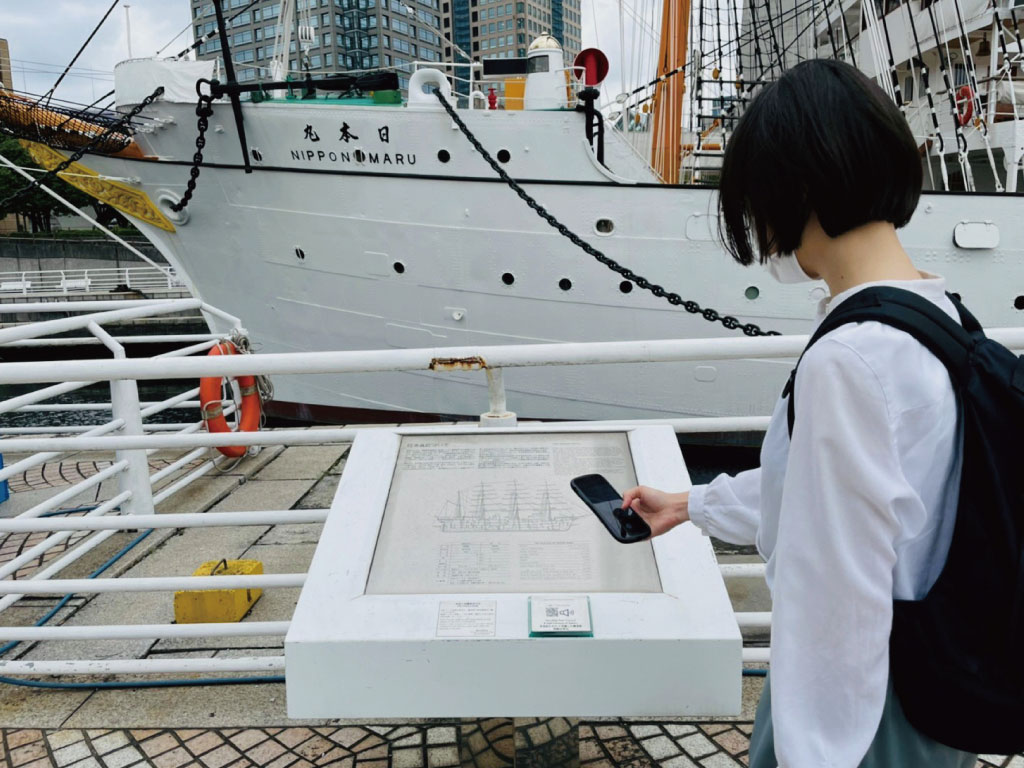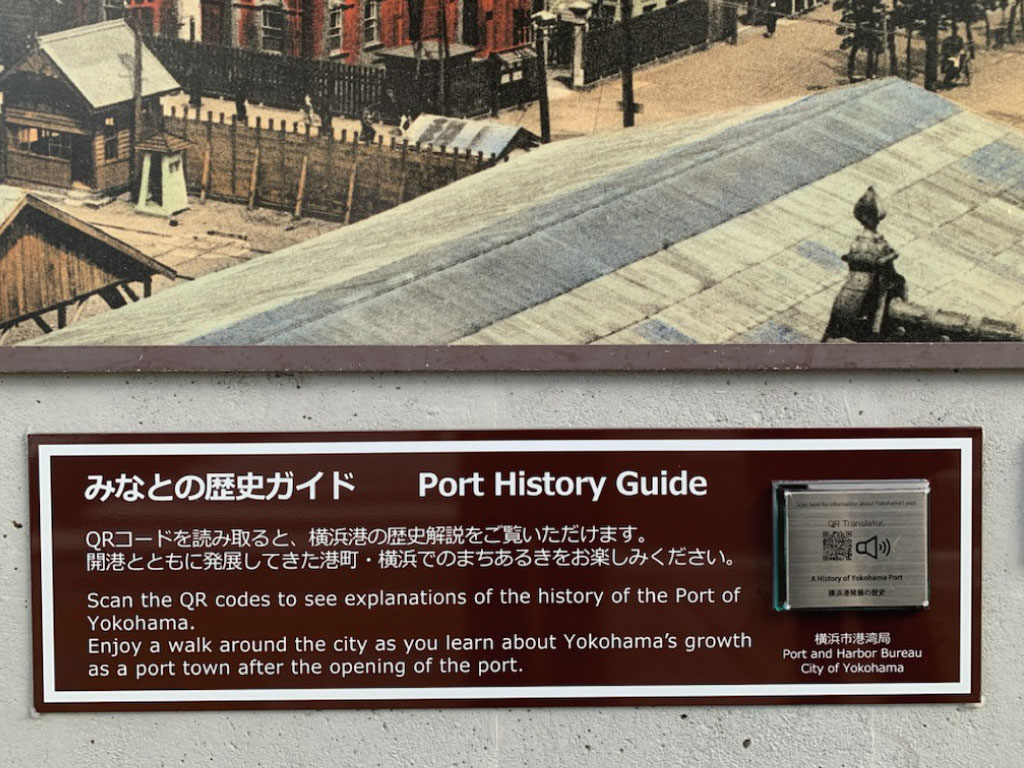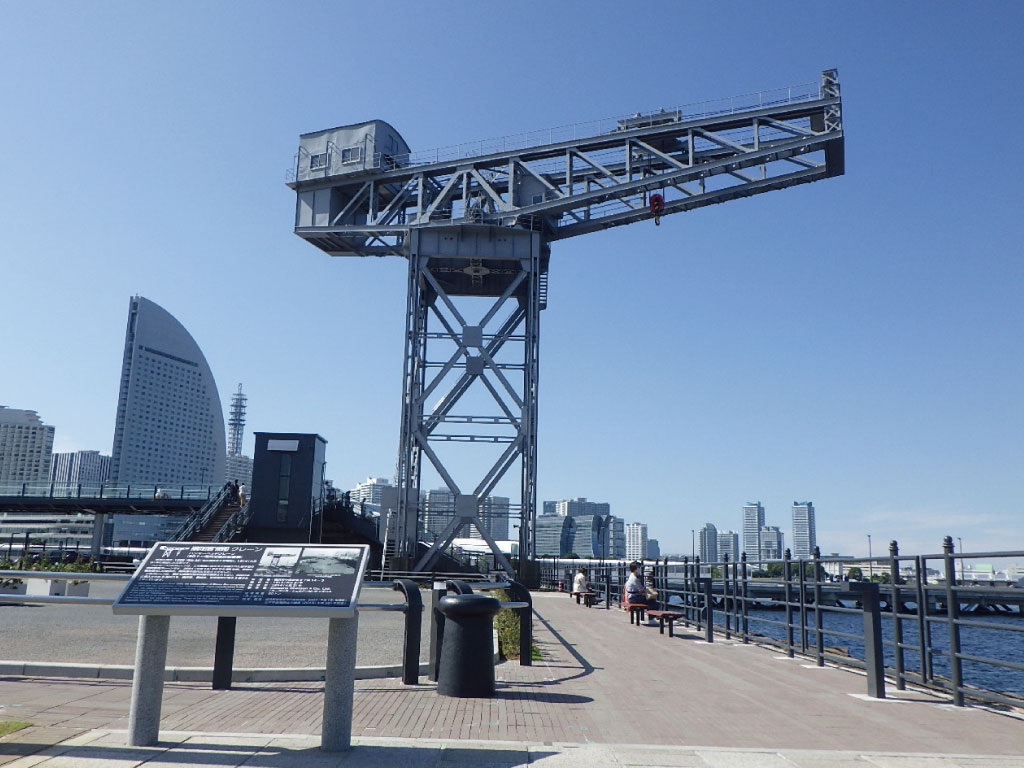
Recommended Spots to Experience the History of Yokohama City and Port
Plaques and signs with QR codes have been placed at each spot.
Scanning the QR code with your smartphone allows you to access the Port History Guide, which features the history of Yokohama Port and the origins of the facilities around Minato Mirai 21.
We hope you will take advantage of this service when strolling around the city.
 Find and scan all the QRT codes!
Find and scan all the QRT codes!

 Ōsanbashi Pier
Ōsanbashi Pier
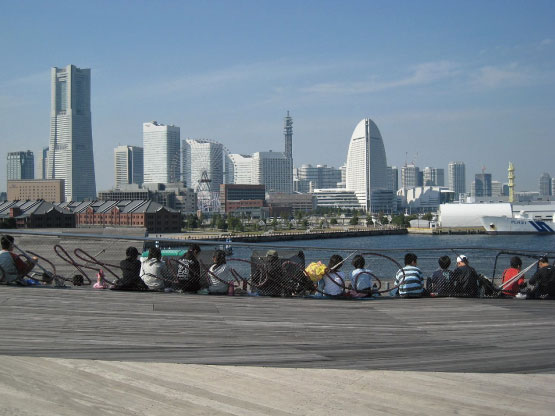
© ycga Y.Kouyama
The International Passenger Terminal is a port of call for large cruise ships from around the world. From the rooftop plaza, which resembles a wave swell, you can enjoy the view of Minato Mirai 21 and the three towers of Yokohama all day long. It is also nicknamed kujira-no-senaka (the whale's back) because it looks like the back of a whale poking out of the water.
 Zou-no-hana Park
Zou-no-hana Park
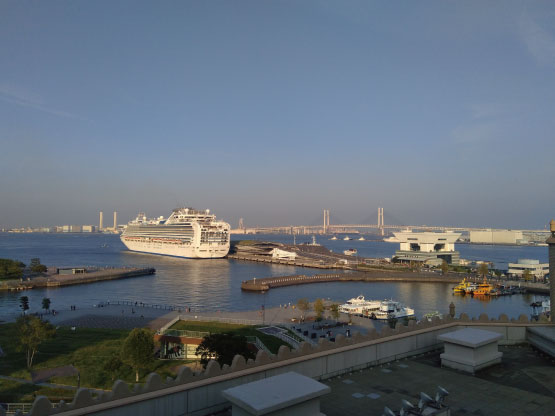
Zou-no-hana is the first wharf in Yokohama, which was designated as a port opening site under the Japan-U.S. Treaty of Amity and Commerce in 1858. The shape of the breakwater, which was curved in 1867, resembles an elephant's nose, and, thereby, came to be known by the nickname zou-no-hana (the elephant's trunk). In commemoration of the 150th anniversary of the opening of the port, the Zou-no-hana Breakwater in the park has been restored to allow access to the end of the pier, where visitors can appreciate the historical significance.
Also located in the park is the Zou-no-hana Terrace, a rest house with an art space, as well as the Zou-no-hana Cafe.

 Yokohama Red Brick Warehouse
Yokohama Red Brick Warehouse

© ycga Y.Kouyama
This structure was built between 1907 and 1913 as a state-of-the-art bonded warehouse. Today, it is used as a gallery space, hall, restaurant, store, etc. and is one of the most popular tourist spots in Yokohama. At night, the building is lit up, creating a fantastical ambience quite unlike that of the daytime.
 Hammerhead crane
Hammerhead crane
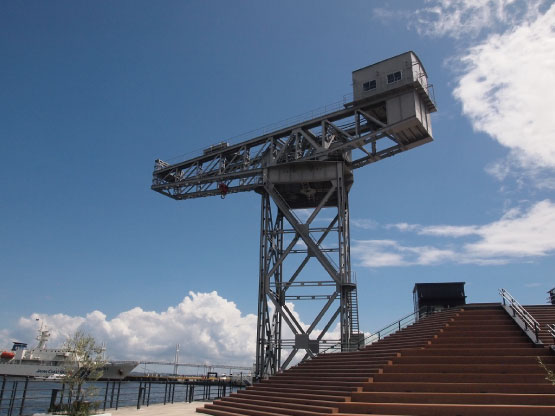
© ycga Y.Kouyama
The Hammerhead crane preserved at the Shinkō Pier was brought over from England and installed in 1914. It withstood the Great Kanto Earthquake and is one of only three historically-valuable cranes still in existence in Japan. Look for the heart symbol right next to the hammerhead crane. It's a great photo spot.


 Kishamichi Promenade
Kishamichi Promenade
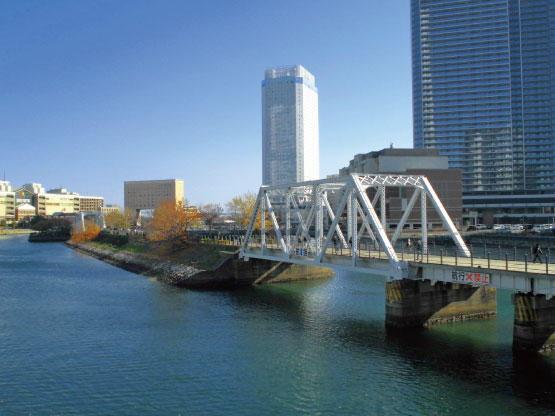
This promenade allows visitors to cross the bay and uses a 500-meter section of the railway that opened in 1911. The rails and bridges are still intact, allowing visitors to gain a sense of the atmosphere of those times past. This area also offers a great view of the surrounding Minato Mirai buildings and is a popular spot for viewing cherry blossoms in spring.
 The Nippon Maru
The Nippon Maru
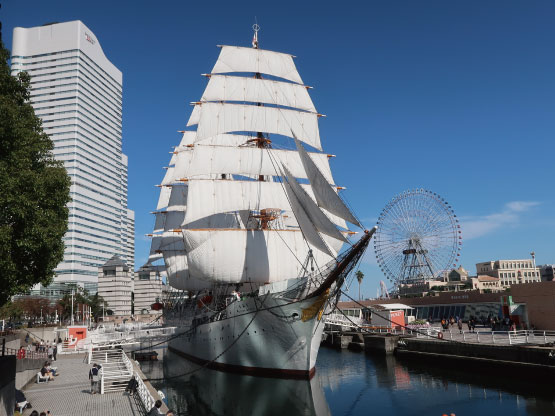
The sail training ship Nippon Maru was built in 1930 for the purpose of training seafarers. She sailed a total of 1,830,000km, or about 45 times circumnavigating the globe, and trained 11,500 sailors before she was retired. The engine is listed in the Guinness Book of World Records as the world's longest running marine engine, with 54 years and two months of operation. The stone dock where the Nippon Maru is preserved is itself also an important cultural property, and you can see a drained stone dock in the Dockyard Garden at the base of Landmark Tower.

 Sakuragicho Station
Sakuragicho Station
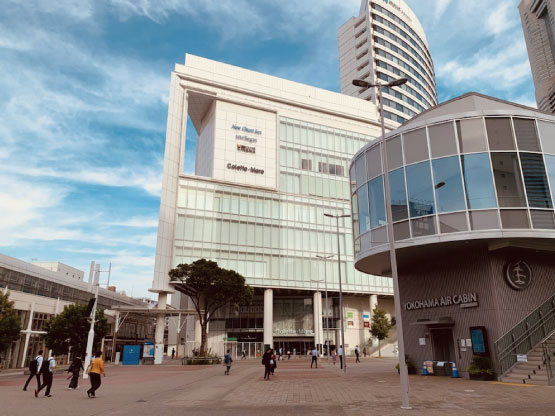
This station provides visitors with a convenient access point to stroll around Minato Mirai 21. There are numerous surrounding establishments where visitors can enjoy meals, movies, and shopping among other amenities.
This is also the boarding point for the YOKOHAMA AIR CABIN ropeway that gives visitors a beautiful view of Yokohama.
Click here for more information about the Yokohama Air Cabin
Walking Guide for Yokohama City and Port (Japanese only)
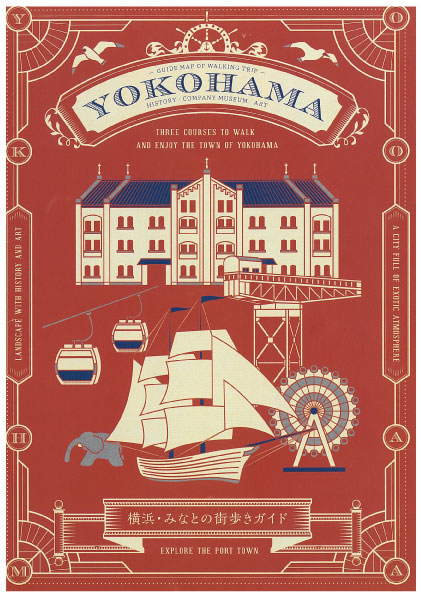
Click here for more information on the Port History Guide and other tourist information.

